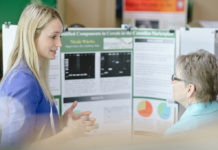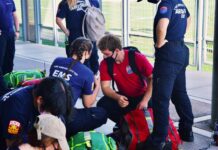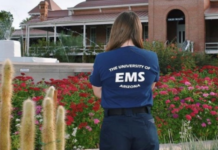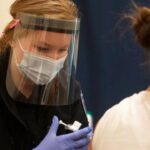Poster Presentation Abstract
Introduction: In 2010, the University of Pennsylvania Medical Emergency Response Team (MERT) initiated the Mass Casualty Incident (MCI) training program. An MCI Field Training Exercise allows MERT to rehearse and improve the MCI protocol execution in a half-day-long drill that includes responses with UPennAlert and the Penn MCI trailer, participation from MERT’s interagency partners, and approximately 40 simulated patients. Past MCI exercises have simulated active shooter incidents, boiler explosions, bus crashes, chemical spills, and bomb detonations. However, areas for improvement include communication between designated officers, allocation of resources, and hindered extrication. Often, decisions made by the commanding officers do not necessarily reflect the changing environment of an MCI scene. Program Development & Implementation: To better prepare student-EMTs to respond and manage a disaster scene, MERT is implementing a tabletop exercise module to ensure that MERT members are fluent in the Incident Command System (ICS), familiar with the MERT MCI operating guidelines, and able to size-up a scene appropriately. Unlike the fast-paced MCI drill, the tabletop exercise is an environment for members to ask clarifying questions, learn the ICS thought process, and make mistakes at their own pace. The tabletop scenario presents a potential MCI scenario to a small group overseen by a facilitator and evaluator. The facilitator presents information to the group and questions members’ decision-making. Program Evaluation: Concurrently, the evaluator tracks progress using a rubric MERT adapted from FEMA and NIMS standards. This tabletop rubric parallels the rubric used for the MCI drill. Both highlight often-forgotten MERT operating guidelines and parts of the incident command structure (e.g. prioritizing areas of the scene). After the exercise is completed, all of those involved debrief and complete feedback forms. Discussion/Conclusion: Our hope is that members will apply what they have learned during the tabletop to an MCI drill and, thus, show improvement in the fluidity of the simulated response.
Author & Article Information
Author Affiliations: Medical Emergency Response Team, University of Pennsylvania, Philadelphia, PA, USA
Address for Correspondence: Gabrielle Ramirez, EMT. Email: drt@pennmert.org
Conflicts of Interest/Funding Sources: By the JCEMS Submission Declaration Form, all authors are required to disclose all potential conflicts of interest and funding sources. The authors declared that they have no conflicts of interest. The authors declared that they received funding from the University of Pennsylvania Division of Public Safety, University of Pennsylvania Division of the Vice Provost for University Life, and University of Pennsylvania Robert A. Fox Leadership Program for the program and/or research described in this abstract.
Ethical Compliance: The authors attest that the research associated with this abstract was conducted in accordance with the JCEMS Ethics Guidelines.
Submission History: Received January 19, 2018; accepted for presentation and publication February 16, 2018.
Poster Presentation: This abstract was presented as a poster at the Academic Poster Session of the 25th Annual Conference of the National Collegiate Emergency Medical Services Foundation; February 24, 2018; Philadelphia, PA, USA. The poster is available for download on the JCEMS website.
Published Online: May 16, 2018
Published in Print: August 13, 2018 (Volume 1: Supplemental 1)
Reviewer Information: In accordance with JCEMS editorial policy, poster presentation abstracts undergo double-blind peer-review by at least two reviewers (JCEMS Editorial Board members and/or independent reviewers) prior to acceptance for presentation and publication. JCEMS thanks the anonymous reviewers who contributed to the review of this work.
Copyright: © 2018 Ramirez, Rao, Bell, & Gordon. This is an open access abstract distributed under the terms of the Creative Commons Attribution 4.0 International (CC BY 4.0) License, which permits unrestricted use, distribution, and reproduction in any medium, provided the original author and source are credited. The full license is available at: https://creativecommons.org/licenses/by/4.0/
Electronic Link: https://doi.org/10.30542/JCEMS.2018.01.S1.08











